|
In February 2022, Keith received the Best Effort Award for Land Ethics and Conservation from the Bowmans Hill Wildflower Preserve. This recognized the creation of the Potomac Valley Native Plant Collection at Meadowlark. Recently, Keith spent four months with the American Horticultural Society helping them with a needs assessment for various new projects. He left to assist with a new grandchild – but is continuing to consult with them on education and travel programs. During the forty years he worked as an interpretive naturalist and natural resource manager, he has studied wilderness areas and botanical gardens in Asia, the Pacific, Africa, Australia, the Americas and Europe. When and why did you become interested in nature and the natural world? Keith cannot remember when he wasn’t interested in nature. While his father was not an outdoor person, his mother was always outdoors – taking him on walks through the local parks and enjoying being outside whenever the weather permitted. He has always been fascinated by birds but said he’s not a “lister – I just enjoy them in the environment in which I see them.” While enjoying outdoor sports such as rock climbing, mountaineering or traveling the globe, Keith was fascinated with the natural world and the native ecosystems. He is particularly interested in regional flora. He has been to more than 100 botanical gardens in nearly 40 countries around the world where he always makes a point of visiting native plant collections. What is the most amazing thing you have experienced in nature? In his travels around the world, Keith has seen many amazing things in nature, including lava flowing into the sea on the big island of Hawaii. “It was stunning to essentially see earth being created,” he said. But one experience in nature stands out more than any other. During his gap decade between high school and college, Keith worked for the Montgomery County School System, taking students on white water rafting, camping and climbing trips. One of those trips stands out vividly in his memory. “It was early May and we were hiking Old Rag to camp on the summit, which was allowed back then,” he explained. The following day they climbed up Mount Robertson and then dropped into Weakley Hollow where they were met by the most phenomenal site. It was covered in wildflowers. “I was blown away. I had never seen such a diversity of flowers in my life,” Keith stated. That experience was an epiphany for Keith, who decided to go to college and study plants.
But he cautions that we need to be realistic. The nursery stock is still 99% ornamental plants. “We can’t set the world back 500 years before Europeans started altering the landscape on a vast scale,” Keith explained. “You can have native and nonnative plants which are not aggressive that remain ecologically stable.” He also noted that climate change is having an immense impact on our existing native plants. “Red maples are becoming prolific and grapevines more aggressive.” Actions that we can take include legislation like that adopted by Oregon which prohibits the sale of English ivy.
Tell us about your work as a Seasonal Naturalist, Potomac Overlook Regional Park and Smithsonian Associates Study Tour Leader “As native plant specialist, I really enjoy introducing new plants to park visitors,” Keith stated. “I always stress that all native plants in cultivation support our regional biodiversity,” he emphasized. “Native plants are patronized by many insects, birds, mammals, and even reptiles.” He tells park visitors that when they use native plants in their yard, they’re supporting the local ecosystem – and in turn, entire eco-regions. “Our area is truly diverse and a great place to grow natives,” he explains that folks will be amazed at the diversity of life that appears as their “native-scape” garden matures over time. As a local study leader for Smithsonian Associates, he has led guided tours for over 20 years. These have included tours to the Chesapeake Bay, West Virginia Highlands, Shenandoah and Great Falls National Parks. Keith maintains a blog – keithtomlinson.blogspot.com – that includes articles on botanical gardens he has visited as well as information on environmental education and nature resource management with a focus on plant diversity conservation. He is careful to explain that he is an interpretive naturalist – not a scientist. “I try to make nature ‘accessible’ to the general public by sharing experiences with them in natural areas.” Interviewed by Charlene Uhl, May 2022 Kinner Ingram was born and raised in Roanoke, Virginia. He has always viewed Roanoke as the gateway to southwest Virginia. He attended Virginia Tech, which is “just 45 minutes up the road from Roanoke.” He started out majoring in wildlife science, then gravitated towards a Conservation major that was “more hands-on." During his undergraduate years he worked each summer at a regional wildlife rehabilitation operation. “I have always enjoyed watching animals in their natural habitats,” he said. He found that working in wildlife rehabilitation helped him learn many of the small adaptations that help animals do what they need to do.
What is the most amazing thing you have experienced in nature? Kinner described two experiences that immediately came to mind. “We were conducting a prescribed burn in a field and I saw a turtle digging a hole to escape the heat,” he said. “And while it was painful, I also remember very clearly when I was bitten by an owl when I worked in animal rehabilitation.” He also recalled what it was like as a teenager sitting in a tree stand in the early morning hours and “watching the world come alive around me.” Consistent with his fascination with nature, Kinner recounted a time during his wildlife rehab experience when a woodpecker was brought in but did not survive. The vet on duty performed an autopsy and showed the employees how a woodpecker’s tongue is exceptionally long and wraps around its skull as a cushion when the woodpecker is drilling holes.
What is something you would like to share with ORMN members? Kinner recently became the ORMN chapter advisor. He shared several things about himself that he wanted our members to know:
Describe what you do on your property to support a healthy ecosystem. Tree and her family live on 3 acres in Montgomery County that were previously logged, then used as a cow pasture. They leave the remaining wooded area alone and typically mow the grass a minimum number of times during the summer. “We mostly mow to keep the tick population away from the house”, she explained. They try to minimize their use of chemicals. “I try to manage insect pests in my vegetable garden by hand-picking caterpillars and squash bugs, or timing my plantings to avoid the worst of the insect damage.” She rarely cleans up her flower garden until late spring, “when most of the overwintering invertebrates have woken up.” A pile of cut wood is home for bugs, birds, snakes and the occasional rabbit. Her family has composted for years but recently got four pet Nigerian dwarf goats. “They have been getting much of my vegetable scraps as treats,” she said with a chuckle. The goats do their part by eating multiflora rose, autumn olive, and oriental bittersweet. “All of their soiled bedding now goes into the garden to enrich the soil.” Her family also has solar panels in the back yard. Tree truly enjoys sharing experiences in nature with her 14-year old daughter. “We recently saw a pair of black snakes mating, which offered a wonderful chance to discuss what an ecosystem is and the importance of procreation by animals that are integral to the balance of nature.” What is the most amazing thing you have experienced in nature? Tree had a marvelous list of amazing things she has seen in nature. Here are just a few:
What is something you would like to share with ORMN members?
Tree shared something that is rooted in the concept of biophilia: “One thing I have learned over the years is that not everyone has the same need or desire to experience or learn about nature as deeply as others do.” She has recognized that some folks are perfectly content to watch birds at a feeder or take a walk in a park. “My grandmother adored butterflies and flowering plants – but she only knew their common names,” Tree noted. She continued, “Some people simply appreciate the beauty of the natural world without understanding the workings of the ecosystem before them, and that’s perfectly fine.” She believes the more people who enjoy nature on any level, the greater the support there will be for protecting our natural resources. With respect to the spotted lanternfly, “The more you know about this insect, the less fearful you will be,” Tree stated. “This isn’t like a Japanese horror film (remember Mothra?). These insects are actually fairly fragile. They do not bite, they don’t invade your home like stink bugs, they are not a major threat to landscape plants and, they are easy to recognize and control.” Interviewed by Charlene Uhl, March 2022 Ann and Bruce Bowman have been Master Naturalists since 2013, graduating as members of Old Rag chapter’s Class 6. They responded to our interview questions in their own words, below.
When and why did you become interested in nature and the natural world?
How long have you lived in Virginia? If not a lifelong resident, where did you grow up/come from?
What is the most amazing thing you have experienced in nature?
Describe what you do on your own property (house, farm, woods, etc.) to support a healthy ecosystem.
Tell us about the projects for which you have volunteered and what you would share about those projects with other ORMN members.
Interviewed by Charlene Uhl October 2021 Photographs of Bowman property in fall courtesy of Ann and Bruce Bowman
Celia at Pen Druid courtesy of Justin Proctor
The focus of these biologists, including Celia, is to help private landowners by providing free technical advice on managing early successional habitats (old fields, restored meadows, pine savannas, etc.), developing management plans, and connect them (if needed) with financial assistance to implement those plans. Celia is the biologist for northeast Virginia and provides service to 20 counties. In the piedmont, that includes Culpeper, Fauquier, Loudon, and Rappahannock counties. “I’m on the road a lot,” she noted. “But I know that my contributions and those of my fellow private land biologists are making a significant difference in land management across the State.” 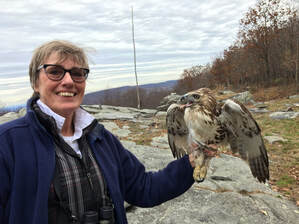 Valerie Kenyon Gaffney was born in a small town outside of Syracuse, New York. She attended the State University of New York as well as Auburn Community College before moving to Washington DC, in 1982. Her first job was in the Circulation Department of the Washington Post, followed by brief stints in the advertising and preprint departments before being promoted to the production department. At the time of her retirement from The Post in 2018 she was an Assistant Superintendent in the Mailroom, serving as Advertising Materials and Quality Assurance Manager. She said it was the best job she ever had, “until retirement that is, which while not paying as much, is now my best job ever.” Valerie related that a friend once told her you should never retire without a plan – or the rest of your life will be spent sitting on a couch. Shortly after retirement she became active in the Virginia Native Plant Society’s local chapter and has served as its Treasurer for the last three years. In 2018, she completed Virginia Master Gardener training and is also a member of two Prince William County garden clubs. When and how did you become interested in nature and the natural world? “We always had birdfeeders growing up and I played outside all the time”, Valerie noted. “My mother had a large vegetable garden that I had to help weed. I made a commitment that when I had an outdoor space as an adult, it would be filled with flowers and plants that didn’t need weeding,” she continued. “Well, I do have a garden with flowers and plants, but I still have to weed!” “When I worked at the Washington Post, one of my managers was very interested in nature and birds”, she shared. “He introduced me to Doug Tallamy’s writings, which changed my whole perspective on nature. As I read more, and heard Doug speak on several occasions, I became so convinced of the importance of native plants that the only yard that has curb appeal for me is one with native plants.” Describe what you do on your property to support a healthy ecosystem. Valerie bought a townhouse in Woodbridge in 2007 “The previous owner had done nothing with the yard,” she explained. “There was nothing for any birds to eat, even house sparrows! I essentially had a blank canvas.” Given her experience with the Virginia Native Plant Society, she decided to install primarily native plants. She planted Joe Pye Weed, common milkweed, and nandina. “Sometimes you don’t know what you don’t know,” Valerie exclaimed, who at the time was no Master Gardener. She planted the nandina near her floor to ceiling kitchen windows, where it grew so large it blocked out all natural light. “Then I did the research I should have done initially and replaced the nandina with viburnum, which I bought from a local native plant vendor.” This plan had a spectacular display of berries the first year and was filled with birds. Unfortunately, Valerie was not told by the nursery owner that she needed another species of viburnum in order to get berries every year – so in the second year while the plant flourished, it didn’t berry. “So I got another species of viburnum mailed to me from a reputable vendor in Nebraska and sure enough, I have had loads of berries each year that draw in lots of birds, including after the Eastern Bluebird, the Catbird, another of my favorites.” Valerie’s yard is a certified Audubon at Home Wildlife Habitat and provides endless entertainment for her cat Eleanor Rigby. “The catbirds will visit the viburnum to pick berries for their young, which they feed in sight of my floor-to-ceiling kitchen window. I can always find Eleanor Rigby there, pawing at the glass.” Valerie is very passionate about cats being kept indoors. She even wrote an article for Bird Box, the Virginia Bluebird Society newsletter which was subsequently reprinted in the North American Bluebird Society newsletter about the peril that cats pose to birds (scroll down to page 5 for her article). In this article she cites the gruesome statistic from the Cornell Lab of Ornithology on how many birds are killed by cats: “an estimated 2.4 billion birds annually and the No. 1 human-caused reasons for the loss of birds, aside from habitat loss.” What is the most amazing thing you have experienced in nature? In November 2018, one of Valerie’s friends – the same colleague who introduced her to Doug Tallamy - invited her to join him and two others to go raptor trapping on Short Hill Mountain, an extension of the Kittatinny Ridge near Purcellville. The station has one blind, two bow traps for capturing larger raptors and one mist net for smaller raptors. According to the very detailed records kept for that day, “It was a good day, not a great day and there was a little flurry of action just after 10:00 a.m. For the day, we caught one 1st year Cooper's Hawk, four 1st year Red Tail Hawks, and one adult Red Tail hawk.” The photo accompanying this interview is one of Valerie about to release the first catch of the day, a female Cooper’s hawk, with a Wing Chord of 257mm, and weighing 540 grams. Alas, the licensed bander who owned the station passed away in 2018 and it was Valerie’s one and only raptor trapping adventure. “But it was truly the thrill of a lifetime,” she reminisced. As the Virginia Bluebird Society (VBS) President, what would you say have been your greatest achievements since you assumed this position – and what do you see as the challenges ahead? Valerie has been active in the Virginia Bluebird Society for ten years. She started feeding bluebirds during a snowstorm when she observed two males digging through the snow, feeding at the bird seed feeder. That very afternoon she went out and purchased live mealworms, put up a couple of feeders and now makes her own suet cakes for the birds. “I was hooked on bluebirds,” she said. The following spring a friend of hers said they needed volunteers to monitor the bluebird trail at Marine Corps Base Quantico. She ended up monitoring that trail for several years and now monitors a nine-box trail on a golf course in Dumfries. This same friend recruited her for the Virginia Bluebird Society’s Board, which she joined six years ago. In 2019, she became President of the Society and has served in that capacity since then. In terms of accomplishments, she is especially proud of the work VBS has done to increase engagement with middle and high school students through grants for installation of nest box trails and nest boxes with cameras at schools. Despite the pandemic, VBS was still able to site trails at schools in Harrisonburg, Clifton, and St. George, and has placed nest boxes with cameras at several schools and community centers throughout the state. She cites the late 2020 hiring of a part-time State Coordinator as being an important first step in increasing outreach to the community. Through a mini-grant provided by Virginia Association for Environmental Education (VAEE), lesson plans have been developed that correlate with Virginia Fourth Grade Science Standards of Learning to use with the nest box cameras provided to schools by VBS. In terms of challenges, she mentioned recruiting a more diverse corps of volunteers. “Right now our board of directors is majority older, white women. I would really like to have a more ‘colorful’ board, and one that includes a few younger people. I know they’re out there. The trick is finding them and drawing them into our nest,” she explained. Valerie continued, “The work we do is important, and as climate change accelerates and habitat loss increases, it will become increasingly important to continue protecting our native cavity nesters and extending our ecosystems. Collaborating with schools, with groups such as Master Naturalists and Master Gardeners, all helps to spread the word.” Combining her personal involvement with Virginia Bluebird Society, Master Gardeners, and Virginia Native Plant Society is what she calls “cross pollination.” Valerie concluded the interview with three wishes for everyone to do: put up a nest box in your backyard; plant more natives; and come volunteer with VBS. Interviewed by Charlene Uhl, September 2021 Photos courtesy of Valerie Kenyon Gaffney: Bee on sneezeweed Bluebird in the rain Monarch on milkweed Catbird fledging through kitchen window Photo of Valerie with Cooper’s hawk taken by Kevin O’Neill on Short Hill Mountain SPOTLIGHT ON OUR PRESENTERS MICHELLE PRYSBY Click here to see text with photos. Michelle Prysby was born in North Carolina and completed her undergraduate degree in biology at North Carolina State University. She then moved to St. Paul, Minnesota to pursue a Master’s degree in Ecology, Evolution, and Behavior at the University of Minnesota. As a She next served as the Citizen Science Director for the Great Smoky Mountains Institute at Tremont, an environmental education center within Great Smoky Mountains National Park. In 2005, she moved to Charlottesville, VA, where her spouse had accepted a job, and where her sister lives. That year, she accepted the position of Virginia Master Naturalist Program Coordinator and Extension faculty member in the Virginia Tech Department of Forest Resources and Environmental Conservation. She helped to establish the first ten Master Naturalist chapters in the state. In 2012, she left to work at UVA for two years, then returned to the VMN program in 2014 and now serves as the program director. This position has allowed her to travel throughout the State and work closely with our State agency partners. When and how did you become interested in nature and the natural world? “I can’t remember when I wasn’t interested in nature,” Michelle stated. “My parents recognized this interest and helped foster it in me through books, pets, access to nature, and trips to zoos.” When Michelle was in fourth grade, her family took a six- week camping trip in the western U.S. They visited Yellowstone, the Grand Tetons, and many other natural wonders. She still remembers how much she enjoyed part of her Master’s research, she started the Monarch Larva Monitoring Project and conducted studies of monarch population ecology. experiencing those amazing places. Another influence that encouraged her to experience the natural world was a neighbor. “She would have been a Master Naturalist if the program existed back then,” Michelle remarked. Her neighbor was a Master Gardener who also loved birds. “She developed a love of birds that I still have. I would constantly be watching the birds in our yard and learning how to identify them. I can remember seeing my first pileated woodpecker and running over to her yard to tell her about it,” she recalled. As an adult, her interest in the natural world led her to get a bachelor’s degree in biology. She never considered any other major, unlike many college students who often consider several different majors before choosing one. “I always saw myself as having a career related to the environment, perhaps a park ranger or something similar,” she explained. Describe what you do on your property to support a healthy ecosystem. “Our home is in a suburban environment, like many people who live near a metropolitan area,” she stated. “We try to consider our environmental values when we decide what to buy, what to plant, when we do something to our house.” They have installed solar panels to reduce the energy consumption of fossil fuels. Pawpaw trees grow in the front yard, which provides food for zebra swallowtails. “We are making an effort to balance the ecology of the yard by building on what was here when we first moved in - such as a large Chinese chestnut tree that provides shade- with the plants we install.” They try to use primarily native plants on their 1/3 acre of land and have created a habitat for pollinators. “We have to balance this with the other uses we have for our yard,” Michelle explained, “such as space for our dog to run and growing food for us to eat.” Their garden includes strawberries, black currants, raspberries, and figs. “The birds get to eat a fair amount of what we plant as well, so it is serving as habitat for them, too,” she said with a smile. They are also trying to manage the invasives that are rampant in their community by aggressively removing them from their own property. “There are up to a dozen invasives including trees of heaven, porcelain berry along the fence with our neighbor, and English ivy to name a few,” Michelle sighed. “It is an ongoing battle for anyone with land, regardless of the amount of acreage you have.” What is the most amazing thing you have experienced in nature? Michelle had a theme for the four things she recalls as the most amazing things she has seen in nature. That theme was movement and migration. “When I was in graduate school, I had the pleasure and privilege of visiting several wintering sites in Mexico where the Monarch butterflies go,” she shared. “I went to Bracken Cave in Texas to see the free-tailed bats leaving the cave by the thousands at dusk.” And while at a conference in Portland, Oregon she visited a local park where hundreds of Vaux’s swifts emerged in the evening creating breath-taking swirls in the skies. She also has made two trips to East Africa, where she observed the mass migration of wildebeest on the Serengeti. Although these examples are all a bit exotic, Michelle also says she greatly appreciates the day-to-day natural wonders that are all around us in Virginia. As the VMN State Director, what would you say have been your greatest achievements since you assumed this position – and what do you see as the challenges ahead? “Our achievements – and I am not attributing them to just myself – include expansion of the Virginia Master Naturalist program to 30 chapters. This includes a current membership of more than 3,000 volunteers. More than 6,000 individuals have graduated from VMN basic training courses throughout the State over the last fifteen years,” Michelle said with pride. “This wouldn’t have been possible without the leadership roles our volunteers take on,” she continued. “Having Master Naturalists work in nature is vitally important and it is what attracts folks to becoming Master Naturalists.” Michelle stressed the importance of having volunteers take on a leadership role. “This is the linchpin for success,” she emphasized. Michelle noted that over the years some chapters have shut down. Her observation was that it almost always is due to a lack of volunteers for the administrative work that is so vital to the success of a chapter. “In order to be successful in our efforts to conserve nature, we need to recognize the importance of having a cadre of volunteers willing to take on leadership responsibilities – be it a Board member, an officer like the President or Secretary or Treasurer or a committee chair,” she stated. “Without that support, the work of the work of Master Naturalists won’t be possible.” Interviewed by Charlene Uhl, July 2021 Photos courtesy of Michelle Prysby
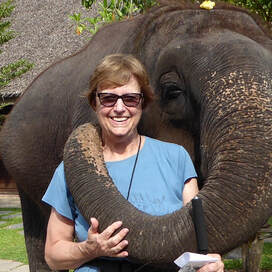 Mary Fran on one of her many adventures Mary Fran on one of her many adventures Born in a hospital in the District of Columbia when her parents lived in Alexandria, VA, Mary Frances LeMat (Mary Fran) continues to claims the city as her birthplace, and returned to live in DC during her adult working life. Her father worked for the U.S. Department of Agriculture. He moved the family to a farm in upper Montgomery County, Maryland, where they lived during her childhood. She enjoyed being outside as a child and that continued into her adulthood. As she and her siblings left home as young adults, her father bought a farm in Highland County Virginia, to serve as a place for the family to gather, which they have been doing for the past 50-plus years. After graduating from college as a math major, Mary Fran started a computer programming company with two friends. They soon secured a number of government contracts and grew to employing over 200 staff. Mary Fran served as CEO of the company until 2006 when she and her husband Harold decided to retire. They had enjoyed living in DC but wanted to retire in a more rural environment. They chose to build on land in Rappahannock County that Harold had previously purchased. They also continued to make regular trips to Mary Fran’s family farm in Highland County, where they are working hard to keep the invasive plants on this farm at bay. When and and how did you become interested in nature and the natural world? “I grew up visiting our family’s farm and was always looking for secret places to go”’ Mary Fran recalled. “I never had any formal training in nature but learned to watch and observe the birds and the animals that were on our land.” When she retired, she wanted to learn to identify trees and birds. “It helps to have a focus and makes you more aware of everything around you.” She saw an ad in a local newspaper offering training to become a Master Naturalist. She applied and was accepted into the second class offered by the Old Rag Master Naturalist chapter. She found her class experience eye-opening. “I was a total neophyte with no scientific knowledge,” she explained, “And I was enthralled by the different presentations we got from experts, who stressed the impact our actions have on nature.” It made her recall remarks her father made, based on his work at USDA, about how simple changes like contour farming could have an enormous impact on the ecosystem. “One statement in a book by Douglas Tallamy has remained with me after all these years. He said that next to concrete, lawns are the most debilitating surface to the health of the Earth.” Mary Fran truly appreciates the role to which Master Naturalists aspire – to be conservators of our natural world. Describe what you do on your property to support a healthy ecosystem. The 400-acre family farm in Highland County is a major focus of Mary Fran’s and her husband’s efforts. Local hunters are allowed to use the land for hunting, in order to control the deer population. About 120 acres are used by a local farmer for grazing cattle. The remaining land is steep and rocky in places and has become overrun with invasive plants, including Japanese barberry and autumn olive – some reaching up to 10 feet in height. “Beginning in April or May and throughout the summer, my husband and I go to the farm to spray these invasive plants,” she said. “While I no longer can hike up these steep hills, I can spray these plants from my [Kawasaki] Mule. I have a great seat belt and a roll bar and I am tireless in my pursuit.” What is the most amazing thing you have experienced in nature? Mary Fran described the geology on their Highland County farm as the first thing that came to mind. “The geology is amazing in this area of western Virginia,” she noted. “We have found so many fossils and underground karst areas. It is just fascinating.” What ORMN approved projects have you enjoyed the most? Mary Fran has been active in many volunteer efforts, all of which she thoroughly enjoyed, such as the annual Butterfly Count. She most wanted to emphasize, particularly to new Master Naturalists, the value and importance of volunteering for administrative service. She served two terms as ORMN Secretary and just retired from serving as Vice President. She found her administrative experiences interesting, challenging and demanding – and very glad she served in this capacity. “We tend to deceive ourselves when we think our organization doesn’t need us to volunteer for administrative positions,” she said. “You have to remember: it won’t run by itself.” Mary Fran has experienced a number of physical challenges over the last few years, including knee replacements in 2007 and 2018, and a stroke in 2019. She was recently diagnosed with a degenerative disorder which has begun to compromise her balance. She uses two walking sticks, which means binoculars are impossible to use. But she has sought out volunteer opportunities that she can do, given her physical limitations, including bluebird box monitoring, data submissions of the Annual Butterfly count, Feeder Watch and Spotted Lanternfly monitoring. She is project manager of the Virginia Bird and Wildlife Trails Monitoring Project (VBWT) for ORMN, under which ten small teams each make quarterly hikes on one of the VBWT on the Skyline Drive. With her own small team, Mary Fran monitors the Timberlost Trail, which is handicap-accessible. She is quick to point out that her physical challenges have not stopped her from having adventures. She and her husband are taking an eight-day “one day, one country” cruise at the end of August in the Balkan Sea. “We’ll just figure it out as we go along,” she said with a smile. As a member of the Recruitment Committee, Mary Fran knows there are folks with physical challenges who are interested in becoming a Master Naturalist. “My experiences have made me much more aware of the importance that we find ways to connect people who have physical challenges with experiences in nature,” she said. “It would be great to have a place on our website that could feature accessible programs, volunteer activities and the like.” She knows there is an audience out there for these opportunities - because she is one of them. Interviewed by Charlene Uhl, July 2021 Photo credits: Photographs courtesy of Mary Fran 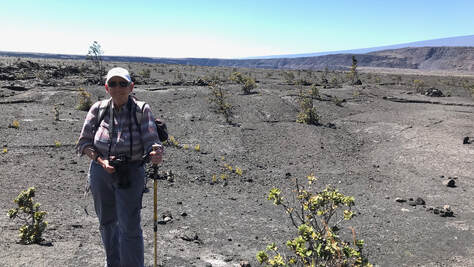 Although born in Illinois, Dorothy “Tepp” Tepper’s family moved to Silver Spring, Maryland when she was four years old. She graduated from the University of Maryland College Park with a B. S. degree in Earth Sciences education and intended to teach junior and senior high school students. But during her student-teaching experience, she found her passion for earth sciences was not matched by her students and decided not to become a teacher. After college, she took a year off in Bar Harbor, Maine, to figure out what she wanted to do. She became fascinated with the geology of the area, so she got her M. S. in Geological Sciences from the University of Maine and went to work for the U.S. Geological Survey. Her career at USGS took her to many amazing geological sites throughout the United States including the Grand Canyon, the Yucca Mountain proposed nuclear waste repository in Nevada, and the Finger Lakes region in upstate New York. She has lived in Virginia for the last 20 years and continues to be fascinated by the geology of our state. When and how did you become interested in nature and the natural world? Tepp’s parents were from New York City and weren’t outdoors people except for sailing. But she, her sister and brother enjoyed being outside as much as possible. When they were in elementary school, they used to use spoons and trowels to dig holes in their yard. Their goal was to dig their way to China. Her father had to redirect them once when they were digging too close to the house foundation and had them fill that hole back up. “We really thought we would be able to dig our way right through the Earth to China,” Tepp said. She was active in the Girl Scouts from Brownies through Seniors and looked forward every year to two weeks or more at Girl Scout resident summer camp. Tepp’s career continued her involvement in and appreciation of the natural world and led her to become a Master Naturalist several years after she retired. Describe what you do on your property to support a healthy ecosystem. Tepp lives on 2.3 acres in Amissville. Her property is half lawn and half woods. She has installed a perennial garden that contains native plants for pollinators. “But it’s more what I don’t do that is important,” she explained. “I don’t rake the leaves off the lawn but allow them to decompose and enrich the soil. I leave the dead wood that falls in the wooded area on my property so it can be used by animals and insects – both for food and for shelter. I don’t use pesticides or herbicides.” Tepp has one of the few gravel driveways in her community because it allows the rain to percolate into the soil and not run off. She explained that her actions are not lazy but purposeful and what she sees as the better way to care for and enjoy her property. What is the most amazing thing you have experienced in nature? Tepp was challenged to choose one (so she chose two) from the many adventures she has had. She is an accomplished amateur photographer and had her own darkroom when she was in high school. Her photograph “Cardinal Family Feeding” won the 2018 VMN Statewide Photography Contest in the fauna category.
Again with her friends, she went to Alaska for a week in August to photograph grizzlies fishing in a salmon stream in Hyder within Tongass National Forest. “We were on a viewing platform on a hillside – not enclosed and less than about 100 feet away from grizzlies catching salmon.” She noted that “while the bears could have easily reached us, they were totally focused on catching and eating as many salmon as they could.” She explained that the bears in Alaska experience a complete hibernation, unlike many bears in the continental U.S. “Alaskan grizzles sleep for months and never leave their dens, which are often snow caves, she explained. They need to build up enormous fat reserves that will last them until the spring thaw.” When asked why she risked being so close to such powerful wild animals, Tepp said she tries to live by a quote of Eleanor Roosevelt’s: “Do one thing every day that scares you.” What ORMN approved projects have you enjoyed the most?
Tepp has participated for several years on the Butterfly Count sponsored by the North American Butterfly Association. She once heard butterflies described as “flying flowers” an image that captures why these insects are so wonderful to watch and energizes her to help collect data to safeguard their continued presence in the natural world. Right after graduating from the Basic Training Class 8 in 2017, Tepp joined the Basic Training Committee and has been a member ever since. She feels this is an area where she can really give back to the Old Rag Master Naturalist chapter. She became one of the class presenters on geology and this year worked ona team with Bonnie Beers, Kathleen Aucoin and Alex Bueno to put together a virtual self-guided geology field trip to Shenandoah National Park for Class X. “Working with these three members was one of the best team experiences of my life,” she said. “Each person on the team brought their unique skills and knowledge to come up with a way to give Class X a genuine field trip while upholding the restrictions of the pandemic.” She is working with a Shenandoah National Park Association representative- to try and make this field trip experience available to everyone in ORMN. In July Tepp will begin her third year as the ORMN Secretary and values the opportunity this position gives her to know about a lot of things going on within the chapter. She looks forward to each graduating class as a source of “new blood and fresh ideas” that will keep the ORMN chapter active and responsive to the needs of our community and the natural world around us. She looks forward to Class X graduates becoming active leaders as they participate on approved projects and volunteer to serve in the many areas of the chapter that will benefit from each person’s unique skills and experience. Interviewed by Charlene Uhl, May 2021 Photo credits: Tepp hiking across a crater in Kilauea Volcano, Hawaii, courtesy of Zoe Sollenberger Cardinal Feeding Family courtesy of Tepp Tepper Giraffes crossing a valley in Tanzania courtesy of Tepp Tepper Grizzly going after salmon in Fish Creek, Alaska courtesy of Tepp 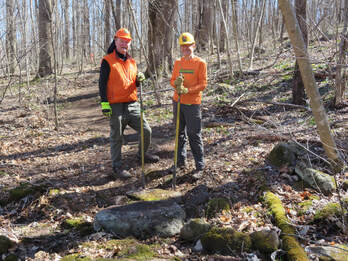 Barry Buschow was born in North Carolina where his father was stationed at the Camp Lejeune Marine Corps Base. His family moved to Falls Church, Virginia when it was a small hamlet – not the urban center that it is today. He loved to play in the woods and streams near his home, often bringing salamanders, frogs, and turtles back where he created habitats for them in large tubs. He would always take them back to their natural habitat at the end of the season. He once found a 28-½ inch long bullfrog and that landed him on the front page of the local newspaper North Virginia Sun, which is no longer published. Barry’s family could not afford to send him to college so he attended a computer school, and then worked the graveyard shift at Goddard Space Center while attending the North Virginia Community College during the day. “I can remember never feeling like I got enough sleep,” Barry recalled. Exhibiting his tenacity and commitment to the goal of getting a college degree, he was able to save enough money to transfer to Virginia Tech in his sophomore year. Barry was initially a biology major but was convinced to change to business as a more “job friendly” major. He played on VA Tech’s baseball team and remains active in its Alumni Chapter to this day. After graduating he worked for a contract engineering company for 31 years. When his wife, an artist, found the home of their dreams in Culpeper, they both retired and moved to an established neighborhood of 20 homes with large lots and many mature trees throughout the community. When and how did you become interested in nature and the natural world? As noted earlier, Barry was always exploring the outdoors. His second love was baseball. “When I was nine years old I was active in Little League baseball. I would carry my mitt with me everywhere” Barry said. He would constantly throw things – balls, rocks, anything that he could hold in his hand - to improve his throwing skills. “One day I was walking around in my backyard and I saw a robin on a fence. I picked up a piece of chuck mulch and threw it at him – and it killed the bird.” Barry said that memory still disturbs him and is part of the reason he has such a strong motivation to take care of nature. Shortly after moving to their current home, Barry saw an ad for the ORMN Basic Training Class and immediately applied. He completed his Master Naturalist training in Class 8 and has been active in the chapter ever since. “The Basic Training Class taught me how much I don’t know,” Barry said with a smile, “but it also taught me how to find the answers.” Describe what you do on your property to support a healthy ecosystem. Barry explained that the first three years on their property were spent in getting a better understanding of invasive plants and effective ways to remove them. Many of their invasives had to be cleared by hand which was very time-consuming. This included taking out 30 autumn olives and a number of Bradford pears. Last summer they established a ¼ acre pollinator garden which is a major source of nectar for his wife’s five beehives. They also had to install a bear fence to protect the hives. Barry is a big fan of bluebirds and maintains five bluebird boxes on his property as well as monitoring two trails for the chapter. Since bluebirds usually don’t use all the boxes each year, he has seen tree swallows and chickadees nest in the boxes as well. Last summer a large oak tree was downed by lightning. Barry had to remove the tree and stump and used the space to create a Milkweed Garden. What is the most amazing thing you have experienced in nature? Barry immediately said that 28-½ inch bullfrog took the prize – then continued by saying “Now every day is amazing. This morning when I was monitoring my bluebird houses, I saw that a bluebird laid eggs in a moss chickadee nest. The bluebird did not wait to build a straw nest over it.” He particularly enjoys the different birds that visit his property, including owls and hummingbirds. He noted that the hummers came a little early this year and he had to find and fill his feeders right away. What ORMN approved projects have you enjoy the most? Barry is active in supporting a number of bluebird trails, including the ones at Hoover Ridge County Park in Madison and the Culpeper Sports Complex. He is also a monitor for a portion of the Appalachian Trail in Shenandoah National Park as well as a member of the ORMN South River Falls Trail monitoring team. Barry also volunteers for Friends of the Rappahannock projects, including riparian buffer restoration and stream monitoring. “There are so many interesting opportunities among ORMN-approved projects and just not enough time to volunteer for all of them,” he said with regret. As the President of ORMN, what would you say were its greatest achievements in your first year as president – and what are the challenges ahead? “I have been so proud at how many members have risen to the challenges of continuing our activities during the COVID-19 pandemic,” he said. “Members have been creative, patient, resourceful, committed and persistent in carrying on – be it the administrative duties, our Basic Training Class, or finding new ways to support our chapter’s projects.” He made specific note of the scholarships that were established by the ORMN Board in his first year of office: one for individuals to participate in the Basic Training; a second for members to attend VMN seminars and annual meetings; and a potential third scholarship for high school students who are interested in conservation. He also praised the efforts of Dera Cooper, Alex Bueno and Carolyn Smith in transitioning members to the new VMN data system. Of ORMN’s 95 members, 56 members - almost 60% - have signed on so far. Barry feels the main challenge of the chapter going forward is keeping members involved in chapter activities, particularly members from the some of the earlier classes. “We need to listen to the interests and needs of all our members – what they are interested in, want to learn and where they want to volunteer,” he explained. Barry continues to support the chapter’s communication and continuing education efforts as some of the most viable ways to reach out to all members. “Every single person who becomes a certified Master Naturalist contributes to the relevance of our chapter. We need to get them all involved in promoting good conservation practices on their own property and throughout Virginia.” Interviewed by Charlene Uhl, April 2021 |
AuthorWrite something about yourself. No need to be fancy, just an overview. Archives
December 2023
Categories
All
|
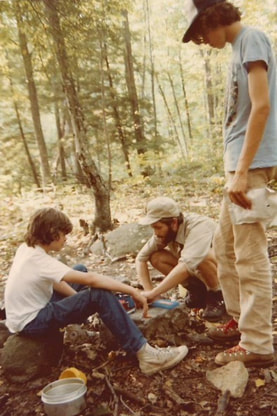
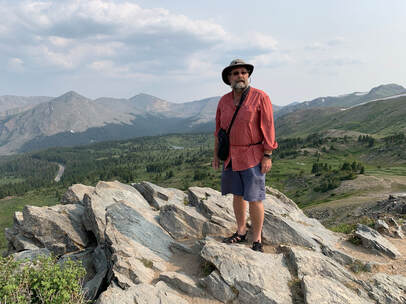

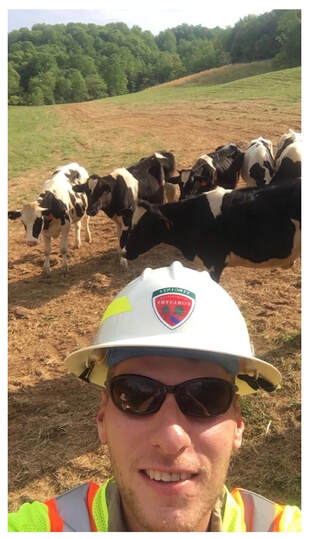

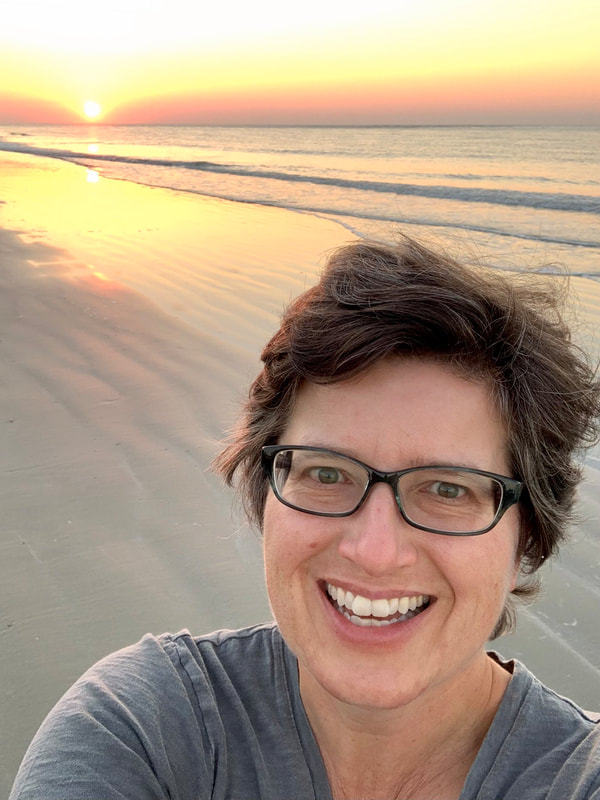
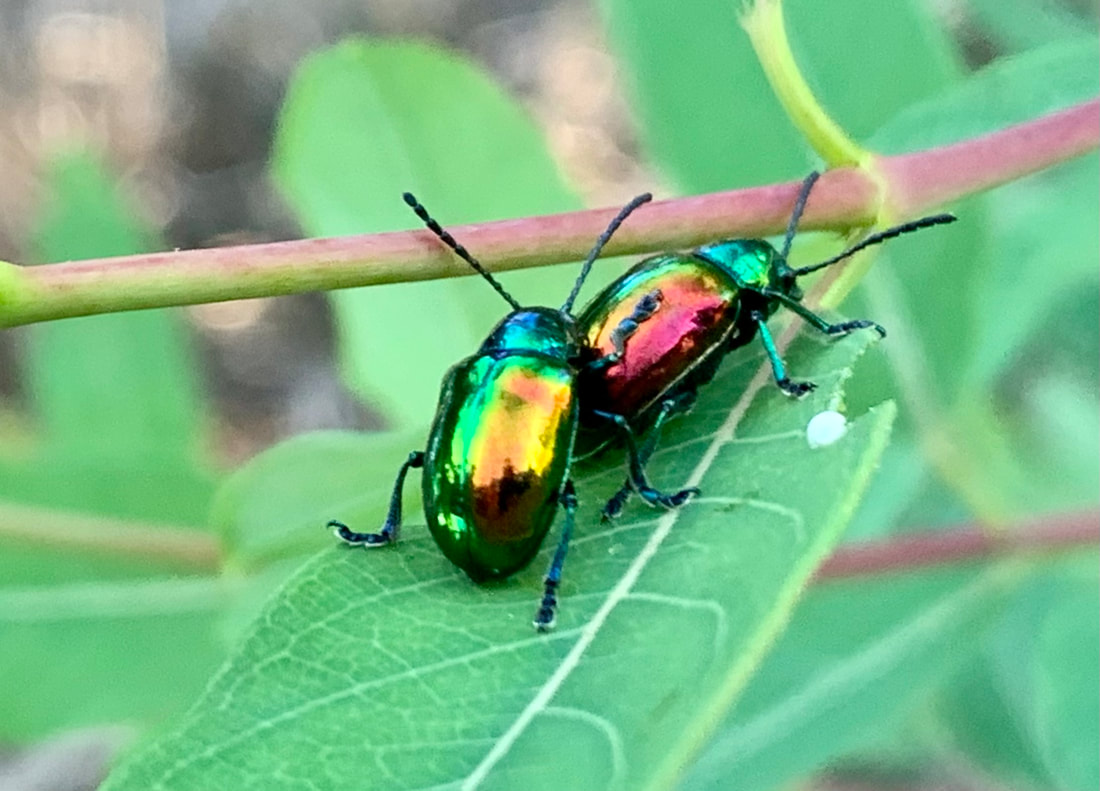
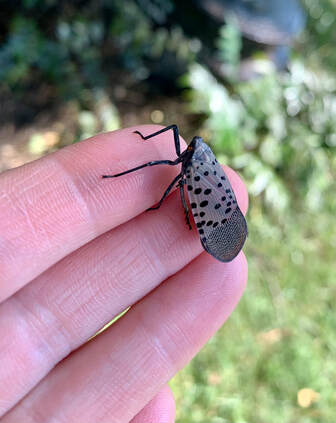
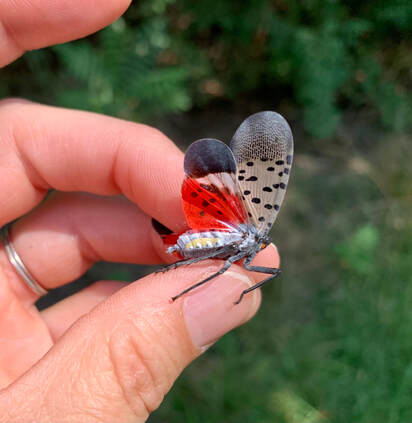
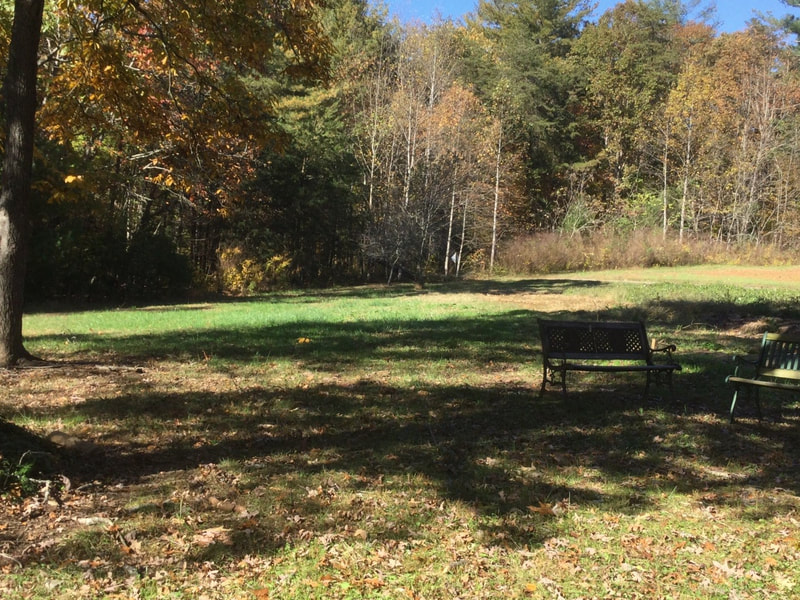
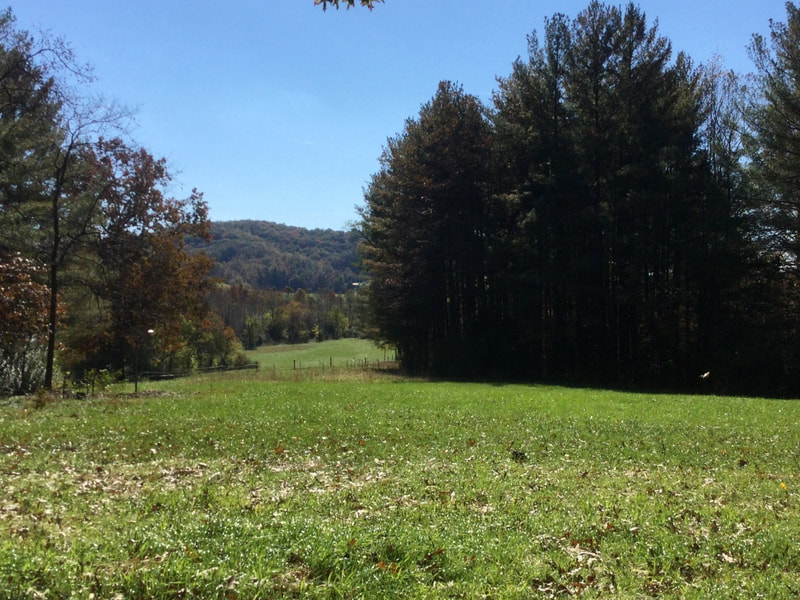
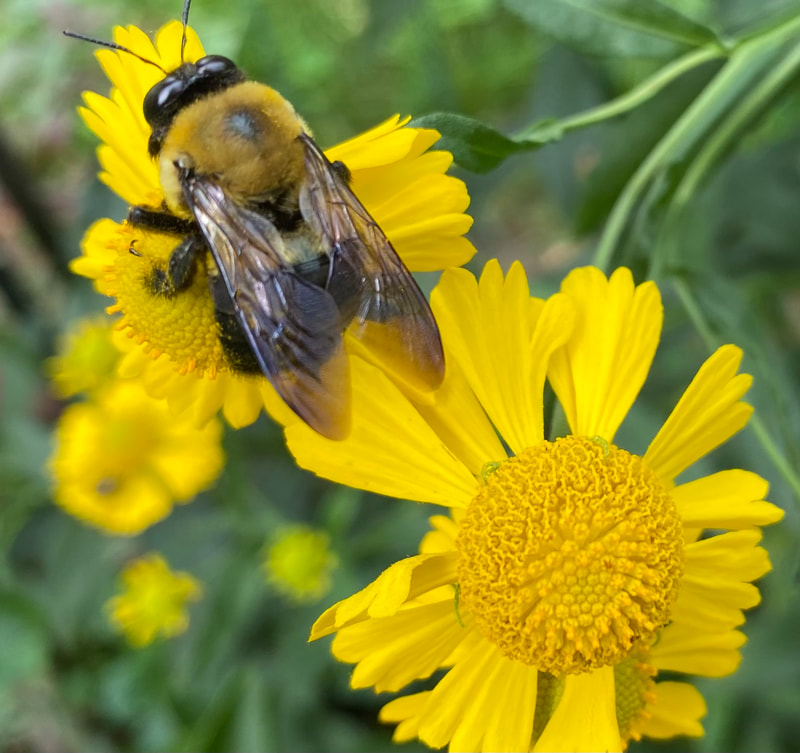
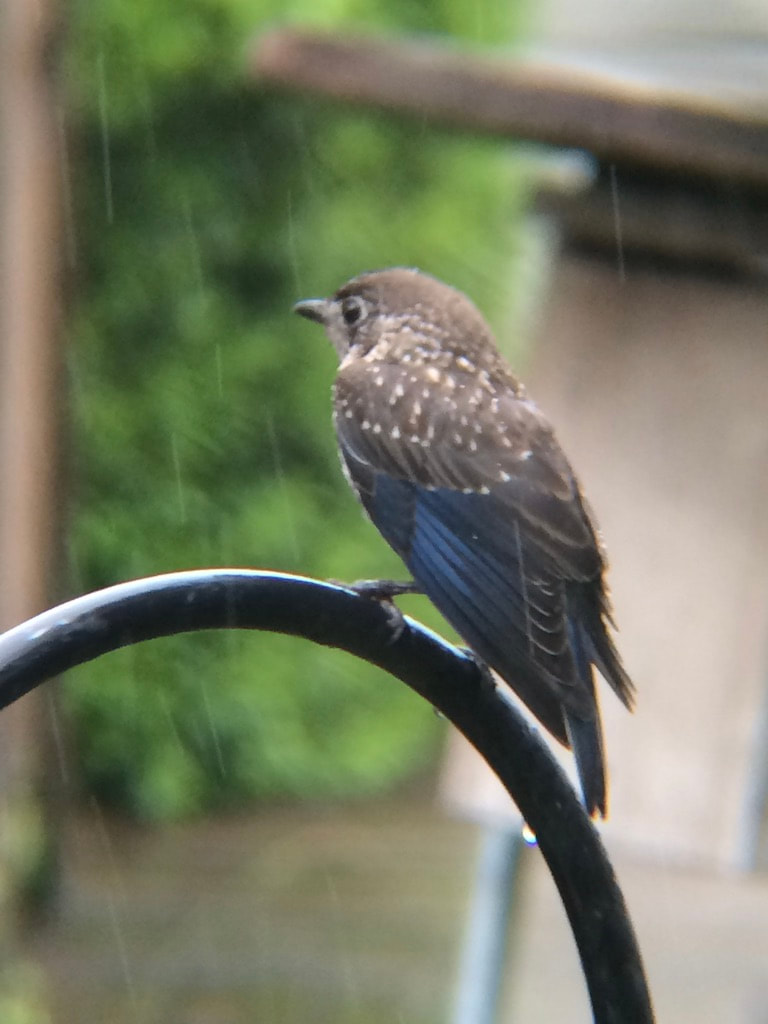
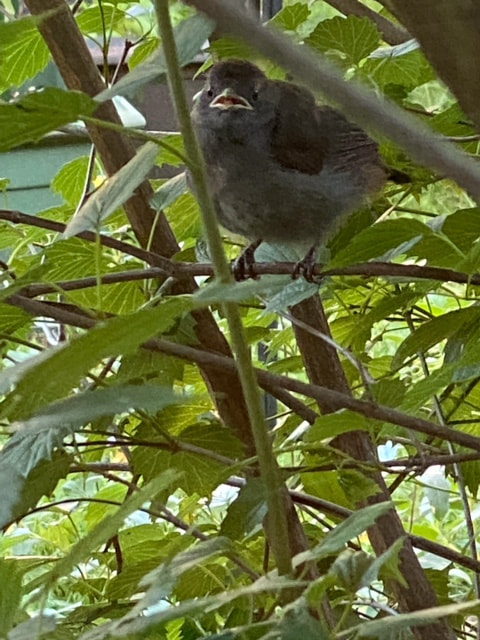
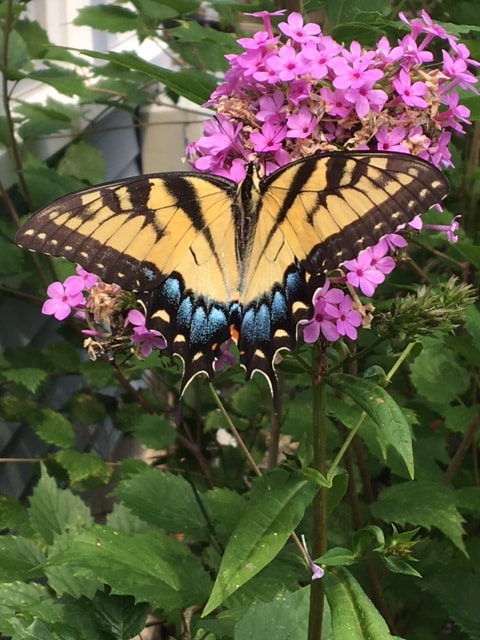
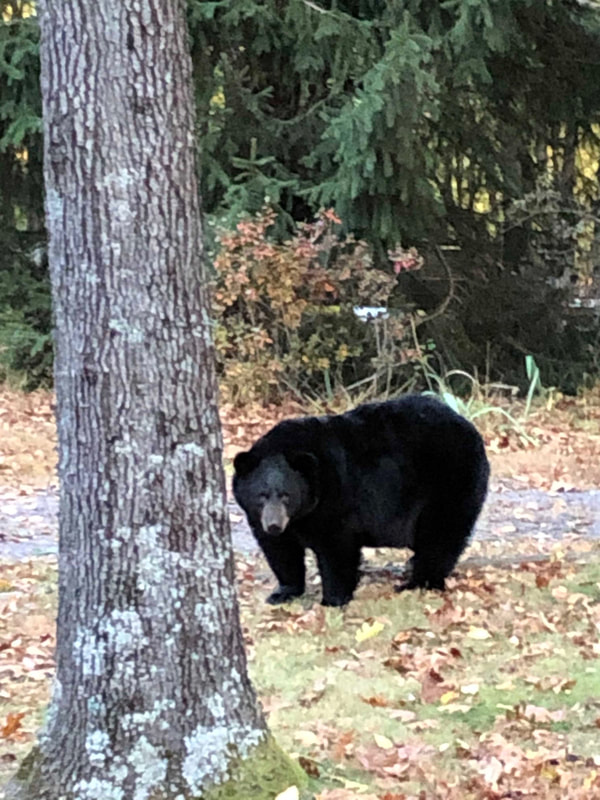
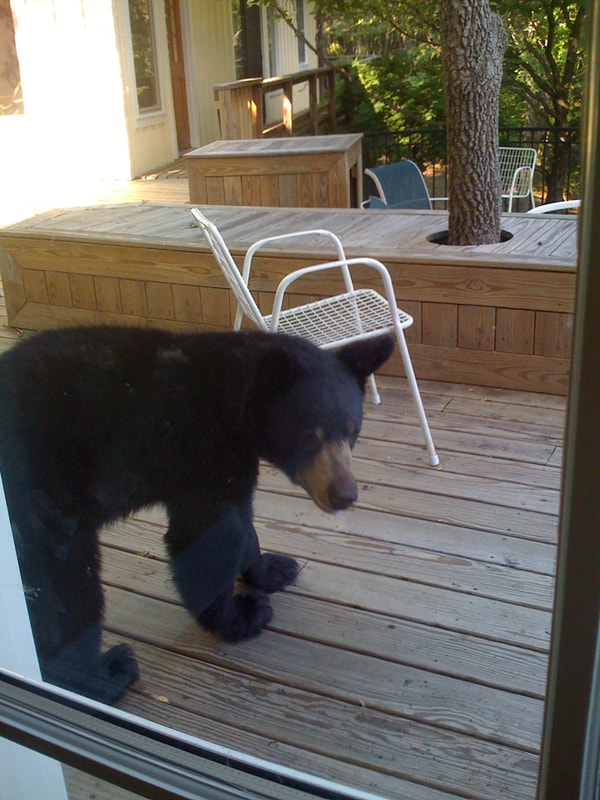
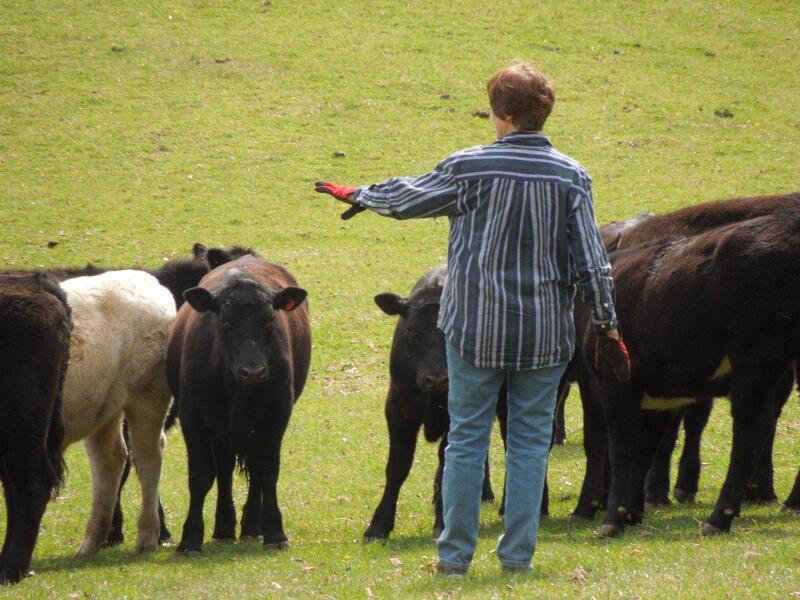
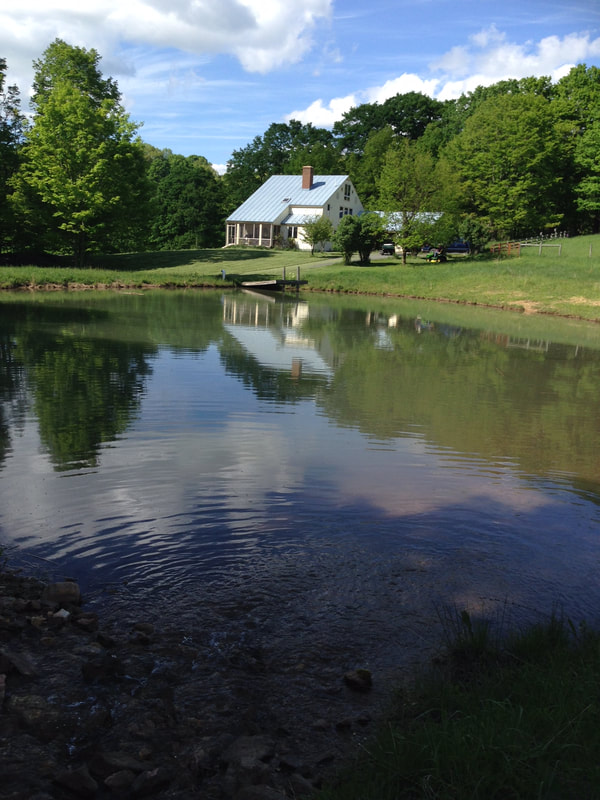
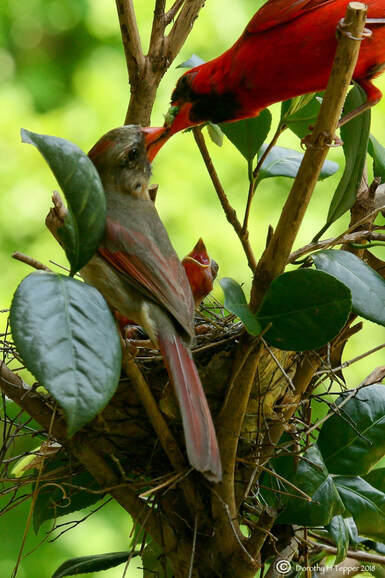
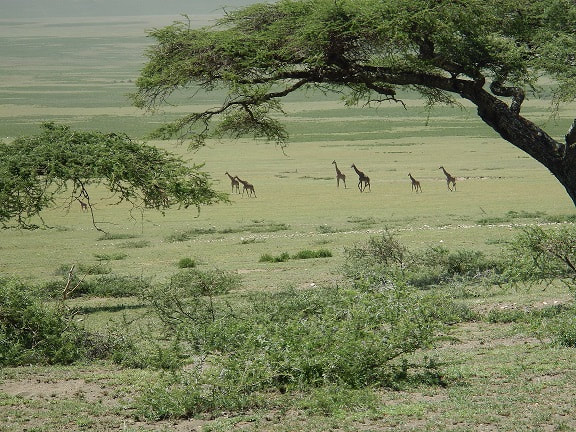
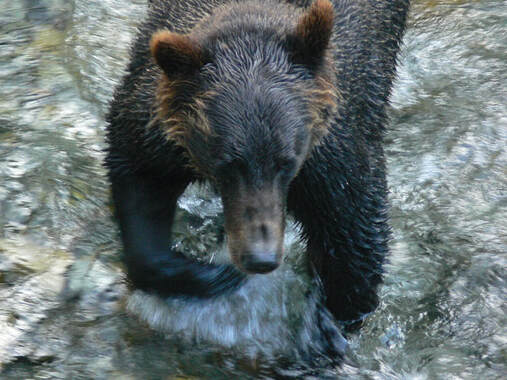
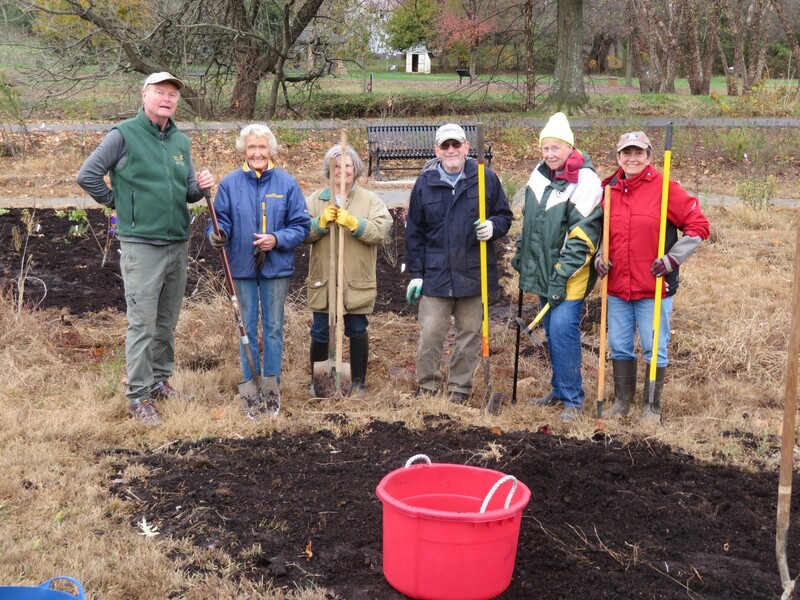
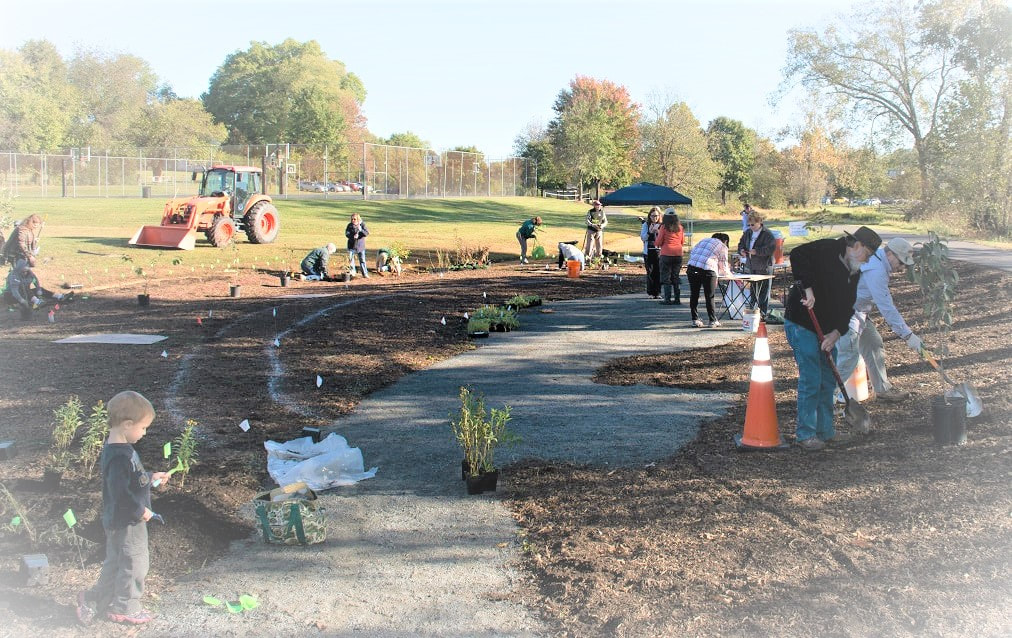
 RSS Feed
RSS Feed